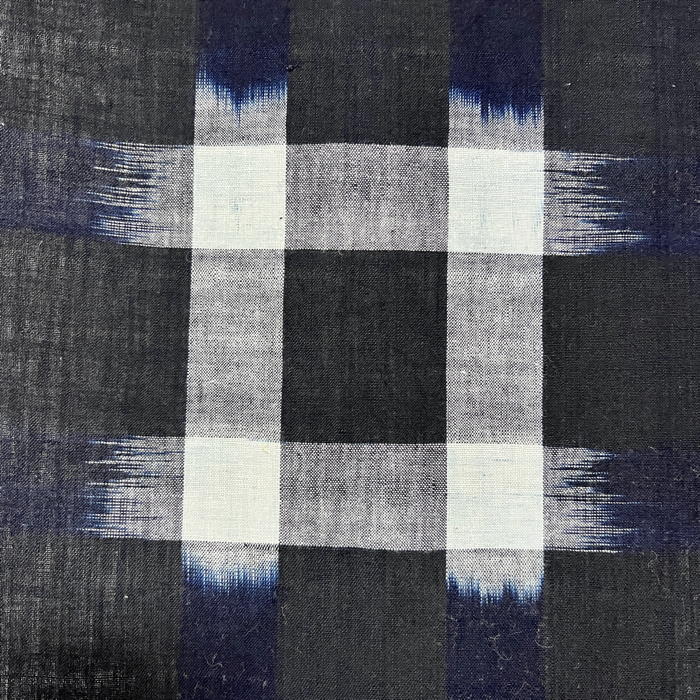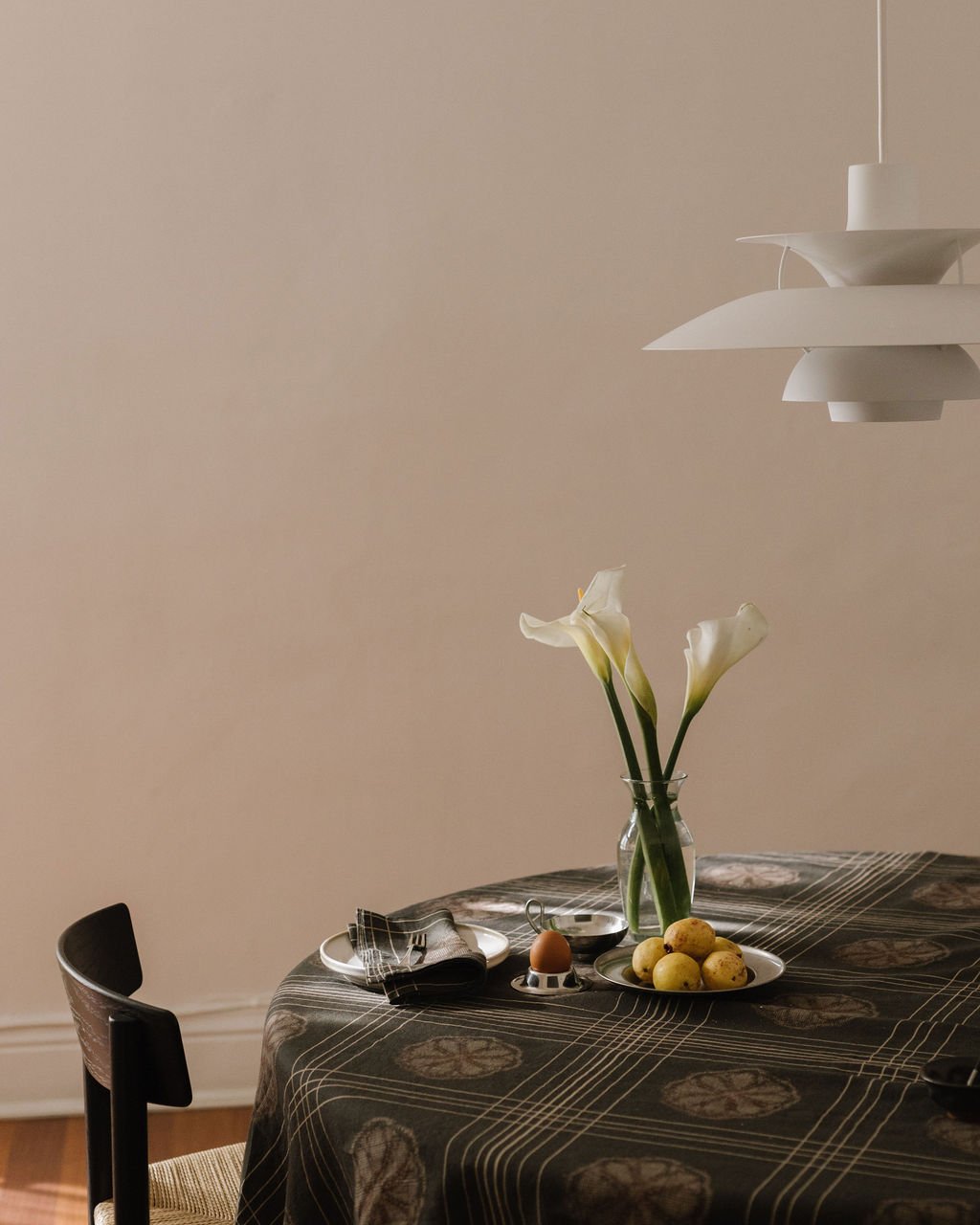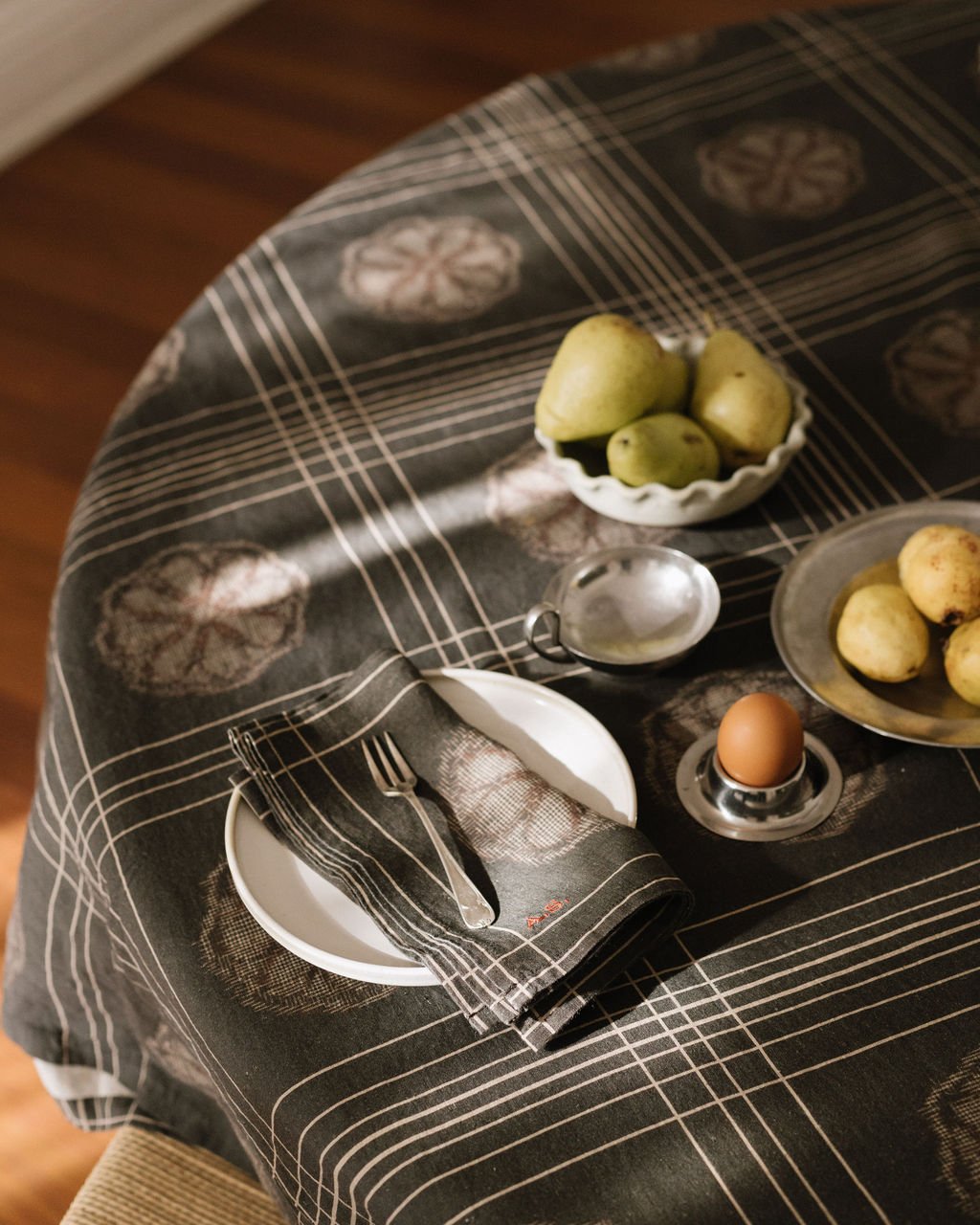RESEARCH DIARY: Egasuri

We’ve already written about the long, global history of ikat, which makes an appearance in the walnut and cream pattern of our Karin print. Today, however, we’re peeling back yet another layer of the pattern’s genealogy to revisit its many manifestations in Japan, where it is better known as kasuri.
Ikat, or kasuri, refers to the typing, binding, or braiding of yarn which is then resist-dyed prior to being woven. Owing to the extreme difficulty of lining up the threads after dying them, this technique results in a broken line pattern, or “blurriness”, which makes for a perfectly “imperfect” print.


This painstaking process is not the whole of the story, however. On the contrary, and perhaps unsurprisingly, Japanese artisans continued to riff on the kasuri technique after it emerged in the 12th century with simple geometric patterns like dots and squares. It took a few hundred years, but by the 1800s, pattern designers were creating increasingly intricate images on the loom, so much so that their style evolved into a new category all together: Egasuri, or “picture ikat”. These motifs often had symbolic meanings and the antique textiles that survive today are highly collectible and sought after. In other words, they are heirlooms — tactile portals into a not-so-distant past.


In the case of our Eva, a repeated floral medallion framed by perpendicular lines marks a new take on a centuries-old tradition. Inspired by the wedding futon covers, cushions, and door curtains of a bygone era, our own version of egasuri is a considered ode to the original, making its debut with our inaugural set of tablecloths, napkins, and place mats.


